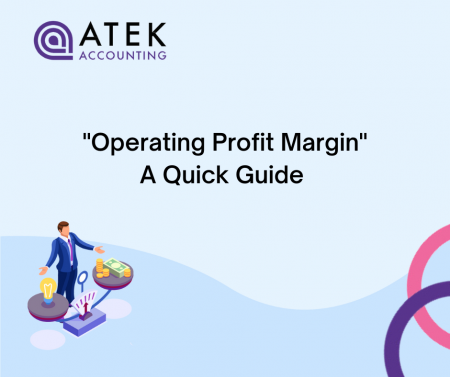
Do you know your operating profit margin?
When running a business, you need to keep a close eye on profits – but profit isn’t a one-size-fits-all term. There are several different profit margins you need to know about, including the operating profit margin. But what is it, and how does it differ from gross and net profit?
What is an operating profit margin?
Your operating margin is a measure of your business’s profitability. It tells you how much profit your business generates from its operations after deducting the cost of goods sold (COGS) and operating expenses.
It differs from your gross profit margin because it doesn’t include other income or expenses, such as interest on loans, return on investments, or taxes.
Net profit, on the other hand, is what’s left of your profit after you’ve deducted all expenses, including taxes.
Operating profit is simply working out how much your business is making from its operations, ignoring other financial aspects.
It’s important to know your profit margins because they’re a good indication of how efficient your business is. A high margin means you’re generating a lot of profit from your operations, and your business is running smoothly. A low margin could mean you’re not selling enough or that your operating expenses are too high.
How to calculate the operating profit margin
The first step in working out your operating margin is to calculate your operating profit.
To do this, you need to know your business’s total revenue and cost of sales, as well as its operating expenses.
Operating expenses include things like rent, wages, utilities, and insurance.
Once you have this information, you can calculate your operating profit by deducting your cost of sales and operating expenses from your total revenue.
For example, let’s say your business had a total revenue of £100,000 last year. Your cost of goods sold was £50,000, and your operating expenses were £30,000. This would give you an operating profit of £20,000. Next, to calculate your margin, you divide your operating profit by your total revenue and multiply by 100. In this example, your operating profit margin would be 20%.
In summary, the formula for working out your operating margin is: Operating Profit ÷ Total Revenue x 100 = Operating Profit Margin %
Analysing Profit Margins
It can be very helpful to compare your operating margin against your gross and net profit margins.
Your operating margin will usually be lower than your gross profit margin because it doesn’t include other forms of income, such as interest or investments.
However, it should be higher than your net profit margin because it doesn’t encompass all expenses, such as taxes.
If your operating margin is lower than both your gross and net margins, it could be a sign that your business is inefficient or that your operating expenses are too high.
You should also compare your operating margin year-on-year because a decline could indicate that your business is becoming less profitable.
What causes the operating profit margin to increase?
There are a few different things that can cause your operating margin to increase.
If your business’s revenue increases but the cost of sales and operating expenses stays the same, then your margin will increase.
You can also boost your margin by reducing your cost of sales or operating expenses. For example, if you negotiate better terms with suppliers or find ways to reduce your utility bills, your margin will increase.
What causes the operating profit margin to decrease?
If your business’s revenue decreases but the cost of sales and operating expenses stay the same, then your margin will fall.
However, if you have to pay more for raw materials or your rent goes up while your revenue remains the same, your margin will decrease.
Maximising business efficiency with Atek
It’s important to keep track of all your business’s financial metrics. By understanding your operating margin, you can get a good indication of how efficient and profitable your business is. Atek can help you track your profit margins and use them to compare your performance against other businesses in your industry. With this information, you can make smarter business decisions that make your business stronger and more competitive.
Want peace of mind knowing that your decisions are based on accurate and reliable financial information? Give us a call, and we can help.












